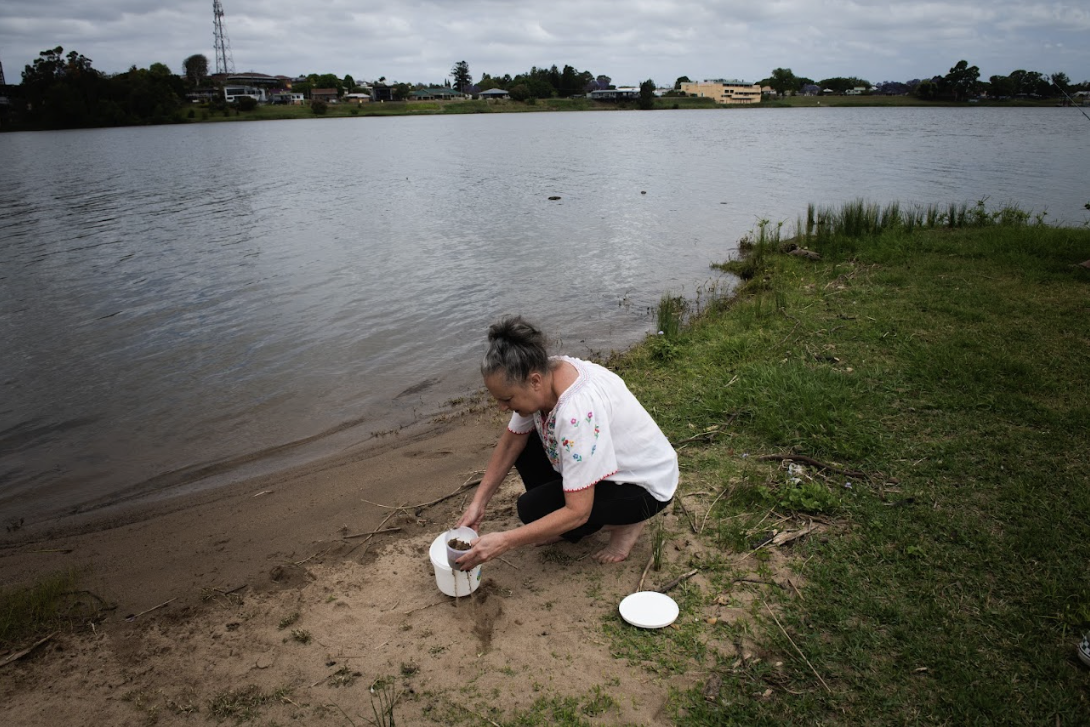Citizen scientists undertake largest-ever survey of the Clarence River
21 October 2025, 6:20 PM
 Clarence River Guardians Volunteer Sarah Nash collecting samples by the river, Photo: Elise Derwin/Southern Cross University
Clarence River Guardians Volunteer Sarah Nash collecting samples by the river, Photo: Elise Derwin/Southern Cross UniversityMore than 200 citizen scientists have gathered along the Clarence River catchment in the largest community-driven survey of its type ever undertaken on the NSW Mid North Coast.
Small teams collected sediment samples from 100 key locations across the Clarence catchment on Saturday 18 October and Sunday 19 October, with volunteer coordinators working out of hubs in Grafton and Tabulam. The samples were sent to Southern Cross University laboratories for analysis.
The survey was led by the Clarence River Guardians and Southern Cross University, motivated by the recent and substantial extension of mining exploration licences and community concern over water quality in the catchment.
It follows a similar, smaller project that concluded earlier this year in the Macleay River catchment.
By analysing sediment for more than 50 different elements, researchers can detect the presence of heavy metals, metalloids and trace elements. This will provide a reference point to assess any future changes, particularly those associated with mining activities and how they might influence water quality.
“We’re establishing a baseline for future management,” said Southern Cross project lead Professor Scott Johnston. “Rivers are delicate ecosystems and once they become polluted, it’s often difficult and slow to reverse.
“Working with citizen scientists is the only way we can collect such a large number of samples over a single weekend. This ensures a significant and robust dataset.”
A unique aspect of the project is the co-design and walking together with First Nations custodians throughout the project development and in refining sample location selection.
In what is perhaps a scientific first, all sediment samples will be returned to their points of collection in the river after the analysis is complete, out of respect for Country, the River and Traditional Owners.
“It was great to see so many people out on the river and participating in this major survey,” said Tracy Pateman from Clarence River Guardians. “We hope this is the first of many to come.”
The logistics of organising large numbers of volunteers to safely disperse to precise locations across a catchment half the size of Switzerland were formidable, but the process was aided by modern GPS-enabled smartphones, QR codes and digital map apps.
Water quality and citizen science in the Clarence River
Technology has played an important role in Clarence River citizen science. A parallel project investigating water quality in the Clarence River has been running throughout 2025, with feedback and reporting of water quality data to the community in real time.
The citizen scientists sample water using a sophisticated digital probe, taking photos of the readings which are uploaded to a WhatsApp group that includes community members and University scientists.
Professor Johnston enters and compiles the data, usually on the same day, and generates simple dot-colour scale maps and summary data which is shared on-line via the Clarence River Guardians website, often within hours of collection. View the data: https://www.clarenceriverguardians.net/estuary-water-quality-data.
“This aids transparency and also provides strong incentive to the group as they can see the results of their efforts,” said Professor Johnston, who calibrates the digital probe and undertakes maintenance at Southern Cross University every three weeks to ensure quality control of the sampling is robust.
“Citizen science backed by University training and analysis is a powerful tool for engaging the community and monitoring such pristine environments as the Clarence River catchment.”
FOR SALE/OPEN HOMES